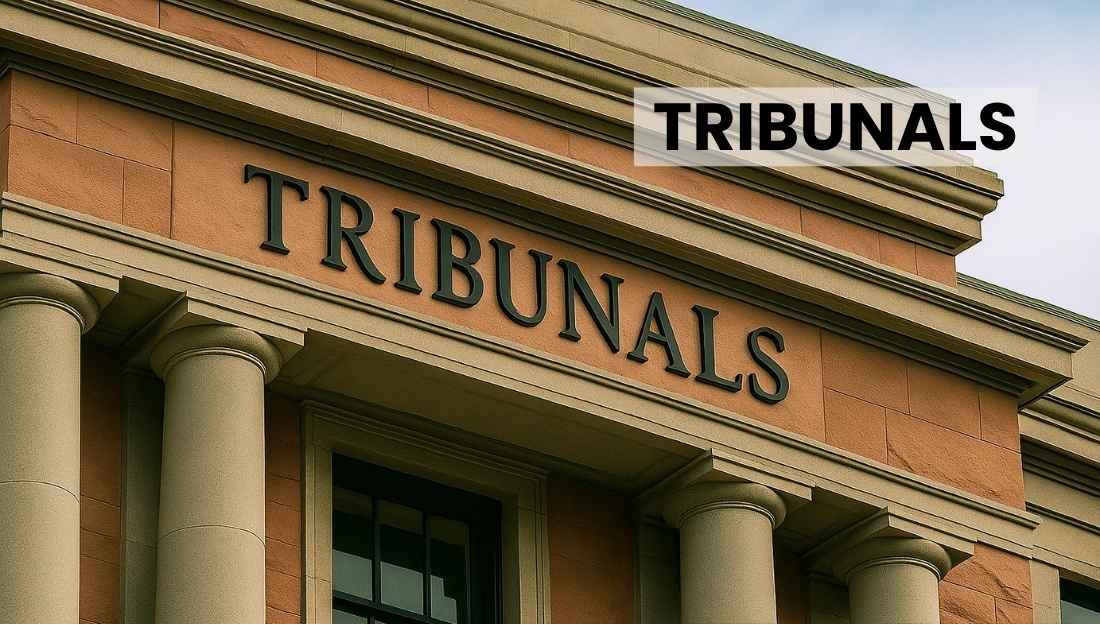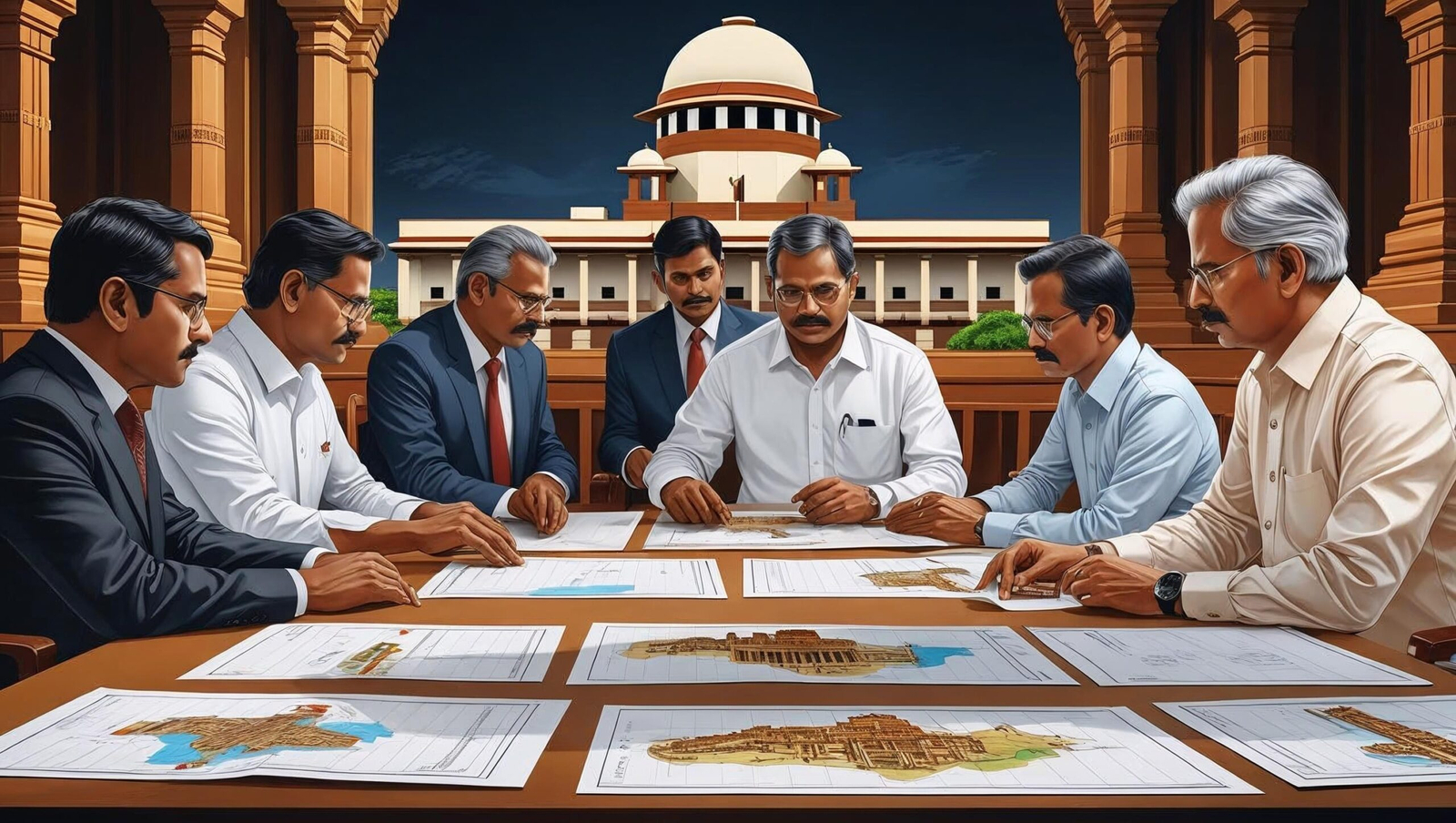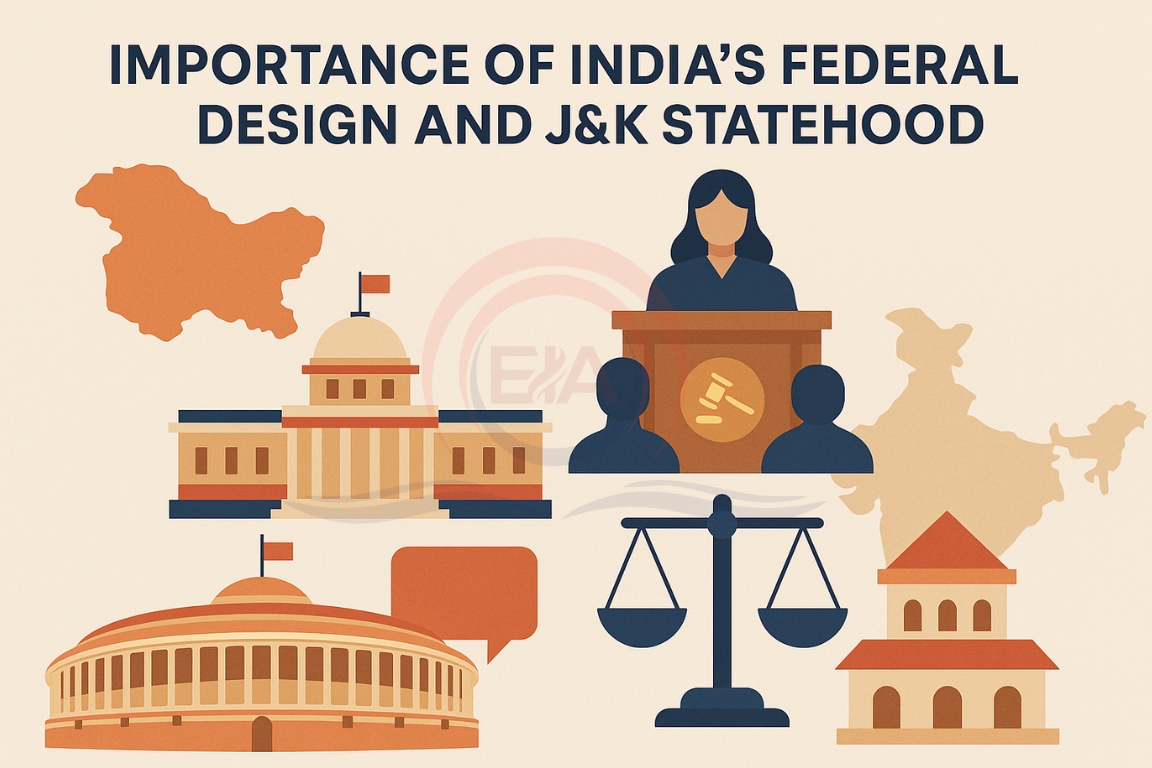The Supreme Court’s ongoing hearings on challenges to the Tribunals Reforms Act, 2021 have revived tensions between the judiciary and the Union government.
What Are Tribunals?
- Tribunals are quasi-judicial bodies created to resolve disputes in specialised areas like taxation, service matters, company law, environment, and consumer protection.
- They aim to provide faster, expert, and less formal dispute resolution than regular courts. They reduce the burden on High Courts and the Supreme Court.
- Members can include judges and domain experts (e.g., economists, engineers, accountants).

Articles 323A and 323B (42nd Constitutional Amendment, 1976)
- Article 323A → Allows Parliament to create tribunals for service matters (e.g., CAT – Central Administrative Tribunal).
- Article 323B → Allows Parliament and State legislatures to create tribunals for areas like: Tax, Labour, Land reforms, Elections, Industrial disputes, Consumer matters
- Part XIV-A of the Constitution: Added by the 42nd Amendment, specifically for tribunals. Provides a structural framework for tribunal creation and functioning.
Judiciary vs Executive: The Ongoing Institutional Friction
- The re-enactment of provisions similar to those invalidated in earlier Madras Bar Association judgments has deepened distrust between the two branches.
- This conflict traces back to the Finance Act, 2017, which reorganised tribunals and shifted major administrative powers to the Centre.
- In Rojer Mathew v. Union of India (2019), the Supreme Court emphasised that tribunals cannot remain effective if the executive controls appointments and service conditions.
Contested Provisions in the 2021 Act
- Four-year tenure for Chairpersons and Members is seen as too short to ensure freedom from executive influence.
- Minimum age of 50 years for appointments restricts younger judges and legal practitioners from joining.
- Re-promulgation of earlier rejected provisions is viewed as bypassing judicial scrutiny and undermining Article 141, which makes Supreme Court rulings binding.
- Judicial recommendations for longer tenure, reduced executive interference, and strengthened selection committees were not incorporated.
Why Tribunals Play a Crucial Role
- As quasi-judicial bodies, they enable quicker and more specialised resolution of disputes.
- They help reduce pendency in High Courts and the Supreme Court.
- Their functioning is constitutionally grounded under Articles 323A and 323B, ensuring a balance between administrative efficiency and justice delivery.
Implications for Governance
- Could set a precedent for future legislation to bypass judicial review.
- May reduce public confidence in tribunals as impartial bodies.
- Weakens the purpose behind tribunals—ensuring quick, expert, and independent dispute resolution.
- It questions the sanctity of judicial pronouncements and threatens the independence of tribunal adjudication, considered part of the Constitution’s basic structure.
Conclusion
The tribunal dispute underscores a deeper constitutional battle over institutional autonomy and accountability. A stable resolution must reinforce judicial independence while ensuring efficient tribunal administration, protecting both governance and the rule of law.
This topic is available in detail on our main website.





